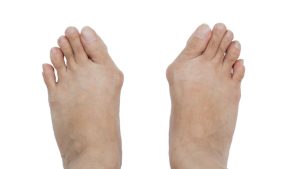Diabetes is a metabolic disease that keeps on growing in number every year. More than 422 million people worldwide are diagnosed with diabetes and about 1.5 million deaths due to diabetes have been recorded each year. Diabetes is so common that you might at least know a person around your family or your friend’s family who do have diabetes. Diabetes is always associated with insulin resistance and medicine such as Janumet 50-500 mg helps to control diabetes. In this article, we will emphasise on how you can solve insulin problems.
Before knowing how to solve insulin problems, what exactly is insulin and how does it link with diabetes? Insulin is a vital hormone which regulates the body’s energy supply by controlling cells and tissue to absorb energy by regulating the blood sugar. Insulin is produced by the pancreas. Insulin resistance occurs when the cells in the body, specifically muscle, fat and liver cells, do not respond to insulin and are unable to utilise blood glucose for energy expenditure. Insulin resistance leads to the pancreas producing more insulin but since the body is unable to utilise it, insulin will not be used by the body efficiently and causes increased blood sugar level. Thus, insulin resistance is linked with diabetes.
Insulin resistance is indeed an insulin problem. Insulin resistance may seem to only be associated with diabetes but truthfully it may be linked with other metabolic diseases such as obesity, hypertension and high cholesterol. Insulin problems may seem harmless at first because most people may not have any symptoms but as time goes by, it increases the risk for many complications such as heart attack and stroke.
Insulin resistance is not something that could be felt and often does not cause any symptoms at first. However, as time goes by, classic symptoms of diabetes such as extreme thirst, extreme hunger and increased urination may be present. People with insulin resistance may have darkened skin in the armpit or on the back and sides of the neck known as acanthosis nigricans. Small skin growth such as skin tags may appear in this area too. The only way to know if a person does have insulin problems is by doing a blood test to check for blood sugar level. Even so, there is no easy way or accurate test of knowing insulin resistance as such tests are complicated and mostly only used for research purposes only. Thus, blood tests are used as a guide to evaluate a person with diseases related to insulin problems.
Since insulin resistance can lead to life-threatening disease, it would be wise to solve this problem immediately. Below are ways to solve insulin problems:
1) Exercise for at least 30 minutes a day or a total of 150 minutes per week with moderate activity such as brisk walking. Exercise can reduce insulin resistance by increasing sensitivity of the body cells towards insulin and building muscle that can absorb glucose.
2) Practise a healthy eating habit of eating more vegetables, fruits, whole grain and healthy proteins. Eating good food will not only improve insulin resistance but also general wellbeing as well.
3) Aim for healthy weight. Losing 5 to 7 percent of body weight can greatly improve insulin function. If you are unsure what weight is safe to aim for and how to reach the weight loss goal, you should talk to a doctor or a nutritionist and maybe consider a personal trainer to guide you.
4) Antidiabetic medication such as metformin may be prescribed by a doctor in order to prevent insulin resistance.
It can be concluded that to solve insulin resistance as part of the insulin problem does mean a lot for patients. It may not be an easy matter for patients to comply with treatments on improving the insulin function but it is certainly a must for patients. This is because if insulin problems are not solved, it will lead to metabolic disease such as diabetes and once a person is diagnosed with such disease, they may need to take medication for the rest of their life. Otherwise, if a patient is not disciplined in treating metabolic disease, the patient will be at risk for complications.
Medicine mentioned at the start of the article which is JANUMET, is one of the common antidiabetic medications. It contains metformin and sitagliptin. Metformin as a biguanide works by decreasing the amount of glucose production by the liver and improving insulin sensitivity. Sitagliptin as a dipeptidyl peptidase-4 (DPP-4) inhibitor works by preventing breakdown of GLP-1, prolonging the GLP-1 action and enhancing incretin levels. These actions ultimately lead to increased insulin production by the pancreas and decrease the amount of glucose produced by the liver. Dosage of JANUMET is individualised and the recommended dose is twice daily with meals. JANUMET is usually prescribed for those with diabetes that is not well-controlled with metformin or sitagliptin alone. This medicine may be combined with other types of antidiabetic drugs. Talk to your healthcare provider if you have doubt when using any antidiabetic medications and ask them if you are unsure on how to properly take it. You may even ask the pharmacist regarding medicine you have received from the doctor. Always take medication prescribed by doctors according to doctor’s instructions.






